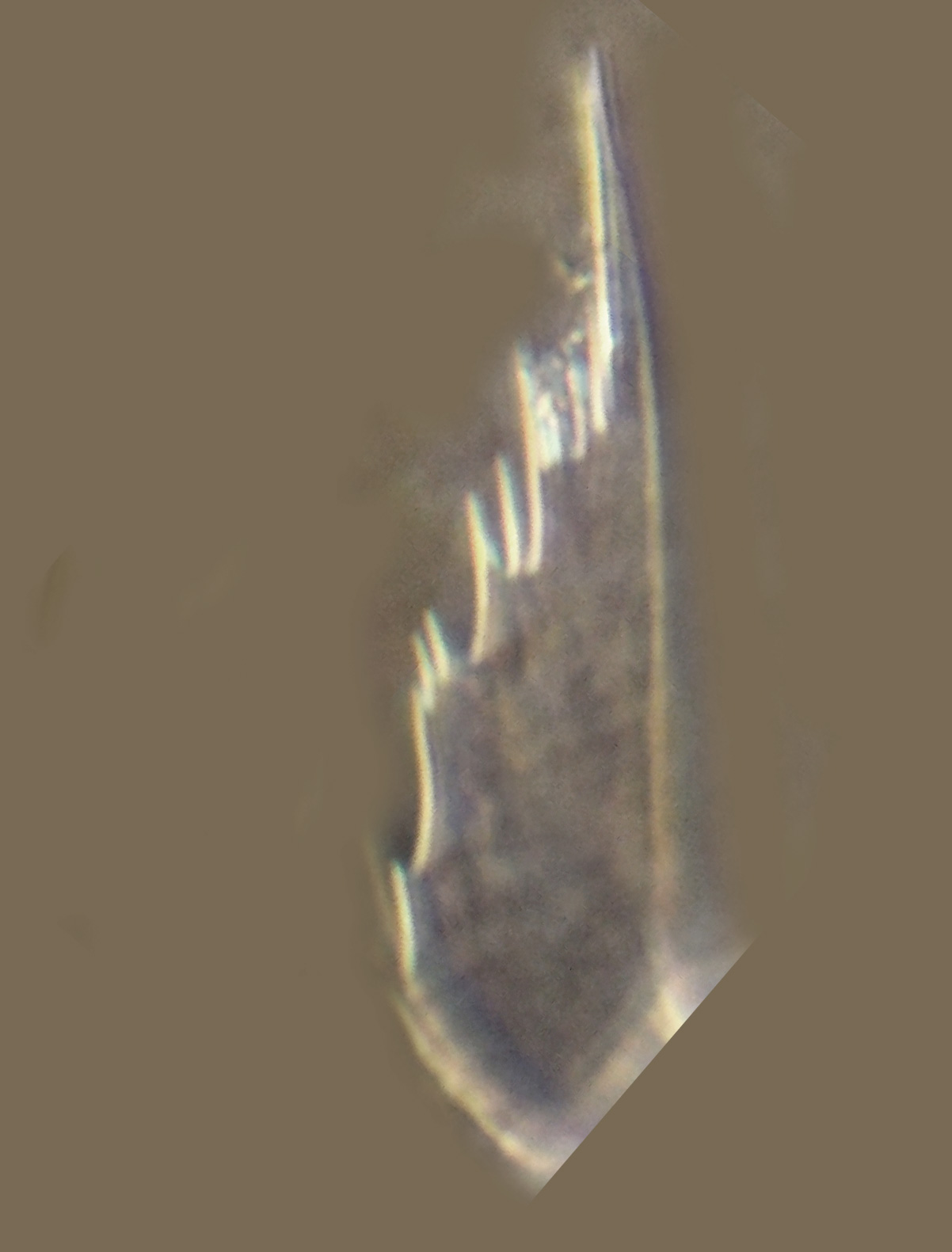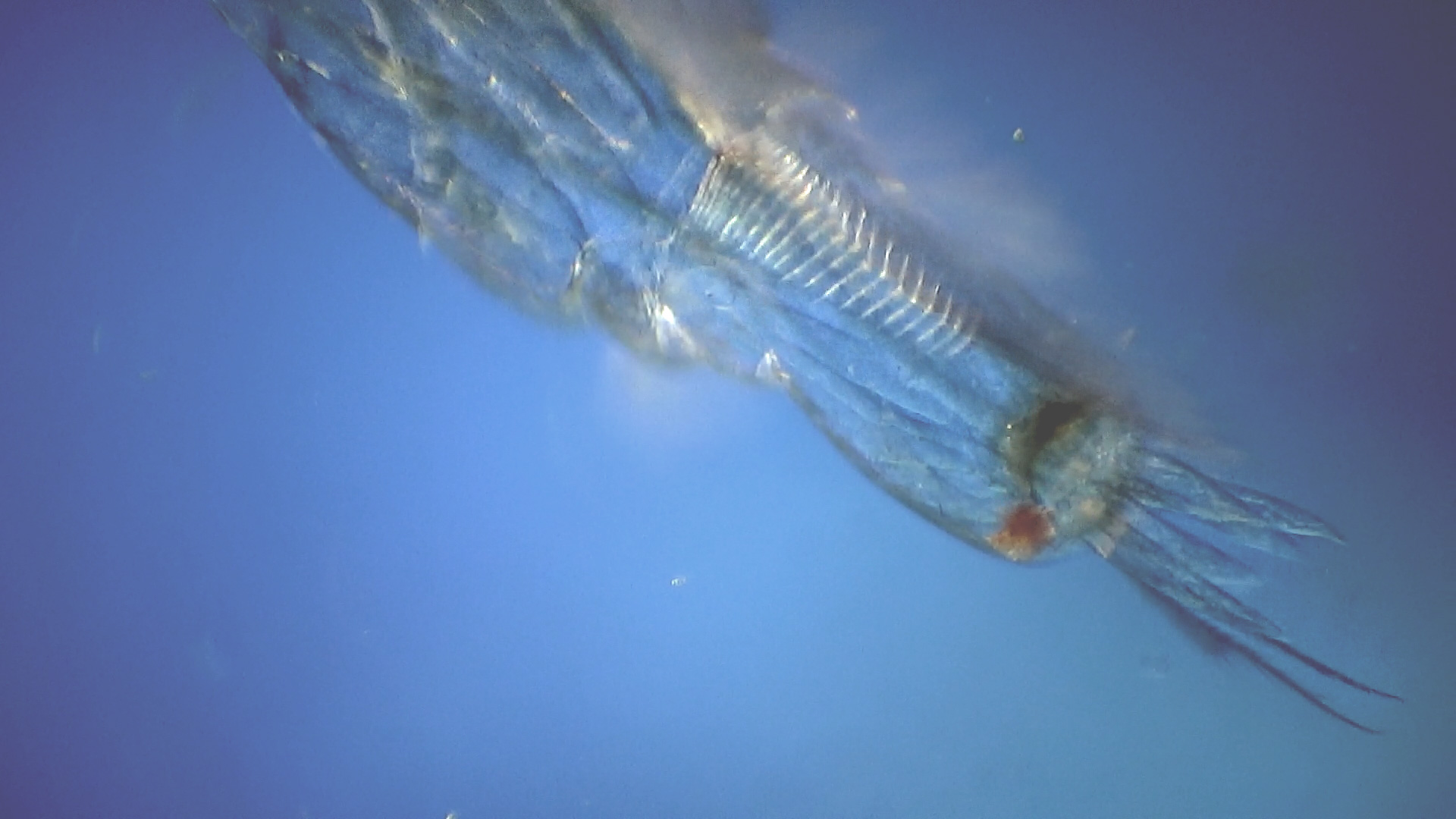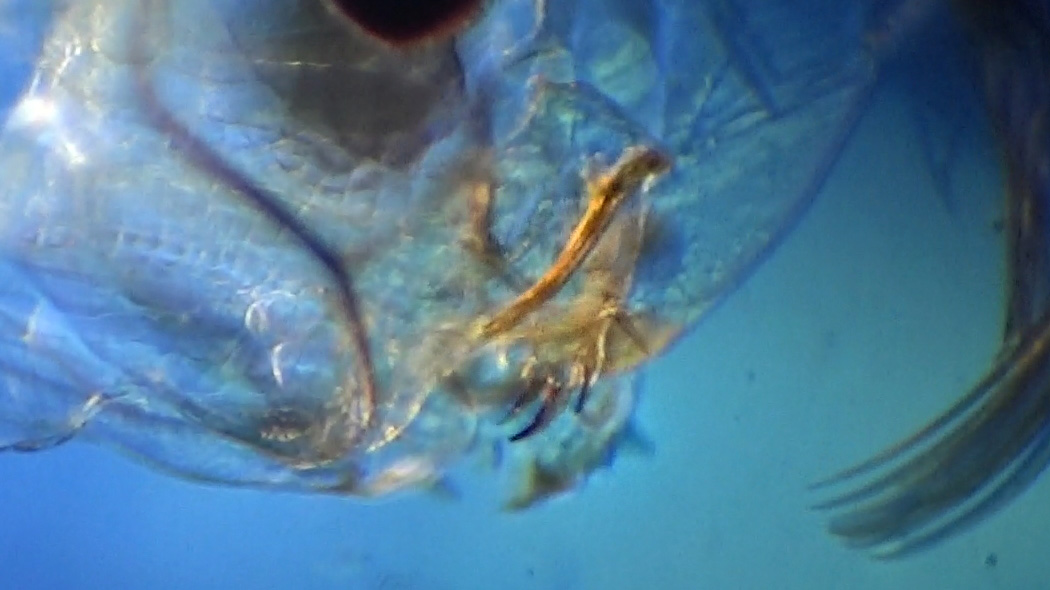|
Chaoborus ID
|
|
| solito de solis |
Posted on 22-02-2017 20:05
|
|
Member Location: Posts: 404 Joined: 05.08.13 |
Hey dipterists I have difficulties to determinate this larva Collected and observed in a pond in Wallonie, Belgium Size 7 mm length Here are the pictures I have made extracting them from video file      It could be C. obscuripes or C.nyblaei merci beaucoup Edited by solito de solis on 22-02-2017 20:06 |
|
|
|
| solito de solis |
Posted on 22-02-2017 20:21
|
|
Member Location: Posts: 404 Joined: 05.08.13 |
 |
|
|
|
| Tony Irwin |
Posted on 23-02-2017 11:46
|
|
Member Location: Posts: 7168 Joined: 19.11.04 |
It's difficult to see the mandibular teeth in these photos, but it looks like they are extensively darkened, more than I would expect in flavicans. There appear to be 21 anal rays, so that would suggest this is crystallinus, rather than obscuripes.
Edited by Tony Irwin on 23-02-2017 11:46 Tony ---------- Tony Irwin |
|
|
|
| solito de solis |
Posted on 24-02-2017 09:32
|
|
Member Location: Posts: 404 Joined: 05.08.13 |
Hello Tony thanks for your answer. As I try to not kill the animals, it's sometimes difficult to collect the right feqtures. I have observed another specimen from the same sample and I had success to make these pictures. Would you please help more ? Thank you   SDS |
|
|
|
| Tony Irwin |
Posted on 24-02-2017 14:58
|
|
Member Location: Posts: 7168 Joined: 19.11.04 |
The last photo is excellent, and clearly shows the small central tooth firmly on the side of the larger one. this is typical of crystallinus and obscuripes, but excludes flavicans. The number of setae in the mandibular fan is unclear, but appears to be at least 12 so this might be obscuripes. It's not uncommon to have both species in the one pond.
Tony ---------- Tony Irwin |
|
|
|
| solito de solis |
Posted on 24-02-2017 23:41
|
|
Member Location: Posts: 404 Joined: 05.08.13 |
Thank you Tony merci beaucoup video will follow |
|
|
|
| Jump to Forum: |













 but don't see the image in the post.
but don't see the image in the post.
